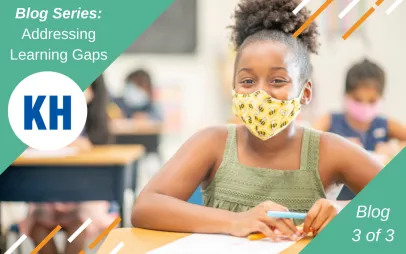Rome Wasn't Built in a Day & Neither is the Solution for Addressing Learning Gaps
March 29, 2021
 By:
Kendall Hunt
By:
Kendall Hunt
Time and patience are key. As mentioned in part 2 of our blog series, realistically educators will need to balance an increase of instructional time or a multi-year approach to bridge learning gaps. It is also important to note that expecting students to absorb an overwhelming amount of new information after a disruptive year should be met with patience and support.
There are many ways both districts and parents have proposed to address the learning gaps. One popular topic of conversation is centered around the use of supplemental resources throughout the year. This provides educators an opportunity to challenge students who are already comfortable with topics and are ready to move on, as well as providing remedial or introductory support to students who are not as comfortable or familiar with a necessary skill set to meet grade-level expectations.
Additionally, services such as summer school programs and the hiring of mentors have been mentioned in the hopes that students can catch-up during the summer months. While these are valid solutions to addressing learning gaps, we must keep in mind the inequities that came to light during the pandemic. Not all students will have the resources to take advantage of these options, and despite the financial aid schools are being given, not all schools will be able to invest that money into these temporary solutions.
As a result of the disruption in education, the parent-educator collaboration will need to continue to be strengthened out of necessity. Parents were forced to engage and oversee the learning process, further driving the notion that learning does not just happen in the classroom.
“It is no longer about what is fastest, cost-effective, or convenient. Now is the time where we as supporters of education must take a step back and refocus our attention on the student as an individual, meeting them where they are and providing reassurance that with our help, we can get them where they need to be.” from Part 1: What will happen to our students?
Comprised of parents with children facing the same struggles we are trying to solve, our K-12 team has put together a list of solutions focused on mathematics available to parents and educators that can be used as a supplemental program during the year, summer learning assets, and family-centered resources. Our hope is to provide you with a list of solutions that will help achieve learning goals easily and affordably. Click here to explore resources.
This is part three of a three-part blog series addressing learning gaps and providing resources curated by Kendall Hunt to assist educators and parents.
